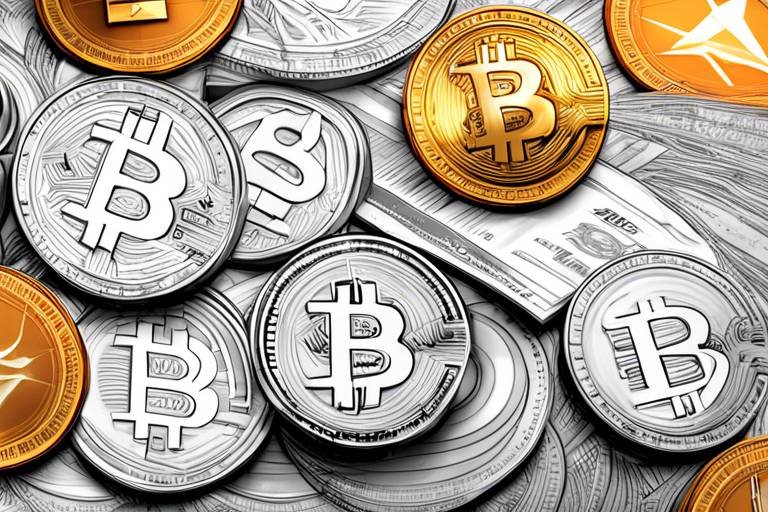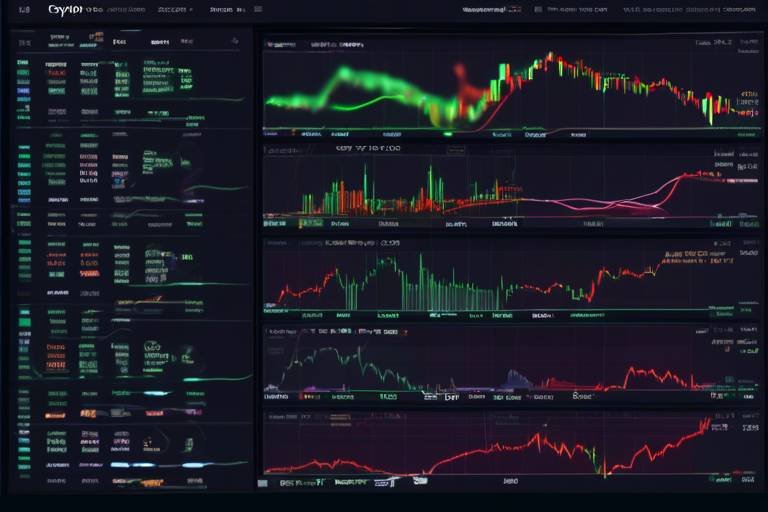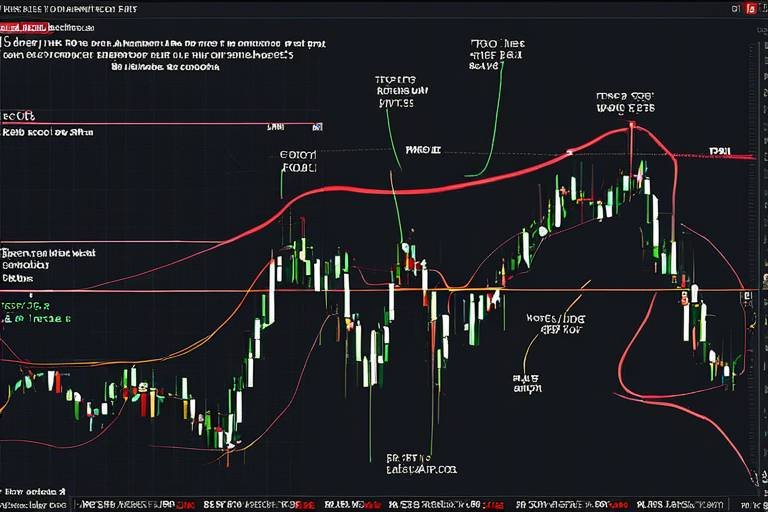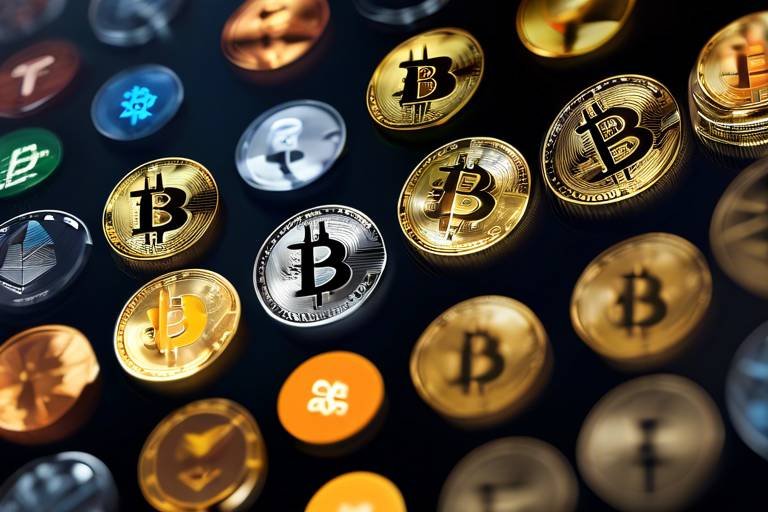Best Practices for Crypto Trading While Traveling
Traveling is an exhilarating experience, filled with adventure and the thrill of discovering new places. But what if you could also engage in crypto trading while exploring the world? The idea of trading cryptocurrencies on the go might sound enticing, but it comes with its own set of challenges. In this article, we’ll dive into essential strategies that can help you navigate the world of crypto trading as you jet-set across different time zones and cultures.
First and foremost, it’s crucial to understand that the crypto market is notoriously volatile. Prices can fluctuate wildly in a matter of minutes, which can be even more pronounced when you’re not in your usual trading environment. Imagine trying to catch a flight while your phone buzzes with alerts about significant market changes! This is where preparation becomes key. By familiarizing yourself with market trends and setting up alerts beforehand, you can make informed decisions quickly, even when you're on the move.
Another important aspect of trading while traveling is choosing the right cryptocurrency exchange. Not all exchanges are created equal, and some may not be accessible in certain countries. When selecting an exchange, consider factors like transaction fees, supported cryptocurrencies, and, most importantly, security features. A reliable exchange can make your trading experience smooth and stress-free, allowing you to focus on enjoying your trip.
Security should always be at the forefront of your mind. As a traveler, you might be using public Wi-Fi networks, which can expose you to potential security risks. Therefore, it’s essential to ensure that the exchange you choose has robust security measures in place. Look for features such as two-factor authentication (2FA), withdrawal limits, and encryption protocols. These elements can significantly enhance the safety of your trading activities.
Speaking of security, let’s discuss two-factor authentication in detail. This additional layer of security requires you to verify your identity through a second method, typically a mobile app or SMS code. Setting this up is straightforward, and it can protect your account from unauthorized access. Always enable 2FA before embarking on your travels, as it can be a lifesaver if your login credentials are compromised.
Another aspect to consider is understanding withdrawal limits. Different exchanges impose varying limits on how much you can withdraw within a specific timeframe. This can be particularly important when you're traveling, as you may need quick access to your funds for unexpected expenses. Familiarize yourself with these limits and plan accordingly to avoid any inconveniences.
Mobile trading apps are a game-changer for travelers. They offer the flexibility to trade from anywhere, whether you're lounging on a beach or waiting at the airport. Popular apps like Binance, Coinbase, and Kraken provide user-friendly interfaces and essential features that allow you to monitor your investments in real-time. Research the apps that best suit your trading style and ensure they are compatible with your devices.
While you’re on the go, keeping track of your transactions is vital. Maintaining accurate records not only helps you stay organized but also simplifies tax reporting when you return home. Consider using a dedicated app or spreadsheet to log your trades, including details like date, amount, and price. This practice can save you from headaches later on.
When it comes to managing your assets, crypto wallets are indispensable. They allow you to store your cryptocurrencies securely while traveling. There are various types of wallets available, including hardware wallets, software wallets, and mobile wallets. Each type has its advantages and disadvantages, so choose one that aligns with your travel needs. For instance, hardware wallets offer high security but can be cumbersome to carry, while mobile wallets provide convenience but may be more vulnerable to hacks.
Lastly, understanding transaction fees is crucial for maximizing your profits. Different exchanges have different fee structures, and these can eat into your gains if you’re not careful. When trading on the go, always be aware of the costs associated with each transaction. Look for exchanges that offer competitive rates and consider consolidating trades to minimize fees.
- Can I trade cryptocurrencies while traveling internationally? Yes, as long as you have access to a reliable internet connection and a suitable exchange.
- What security measures should I take when trading on public Wi-Fi? Always use a VPN and enable two-factor authentication on your accounts.
- Are there specific apps recommended for mobile crypto trading? Popular options include Binance, Coinbase, and Kraken, but choose one that fits your trading style.
- How can I keep track of my trades while traveling? Use a dedicated app or a simple spreadsheet to log your transactions.

Understanding Market Volatility
When you're off exploring new places, the last thing you want to worry about is the unpredictable nature of cryptocurrency markets. Market volatility can feel like a rollercoaster ride, with prices soaring and plummeting in the blink of an eye. But don't let that scare you! Understanding how to navigate this volatility can turn your travel adventures into profitable trading experiences.
First off, it's essential to grasp what market volatility means. In simple terms, it refers to the degree of variation in trading prices over a certain period. High volatility indicates that the price of an asset can change dramatically in a short time, which is often the case with cryptocurrencies. Imagine trying to catch a wave while surfing; if the waves are unpredictable, it can be a thrilling yet risky endeavor. Similarly, trading in a volatile market requires skill and awareness.
While traveling, you might encounter various factors that contribute to market fluctuations:
- News Events: Major announcements or news can drastically affect market sentiment. For instance, regulatory news from a country you're visiting can cause prices to spike or drop.
- Market Sentiment: The overall mood of traders can shift rapidly, influenced by social media trends or influential figures in the crypto space.
- Global Economic Factors: Economic indicators, such as inflation rates or changes in interest rates, can also play a significant role in market behavior.
To make informed decisions while on the go, consider these strategies:
- Stay Informed: Use reliable news sources and market analysis tools to keep track of the latest developments. Apps like CoinMarketCap or Crypto News can be incredibly handy.
- Set Alerts: Most trading platforms allow you to set price alerts. This way, you can receive notifications about market movements without constantly checking your phone.
- Practice Risk Management: Always have a plan in place. Decide in advance how much you're willing to invest and what your exit strategy will be if things don't go as planned.
By understanding market volatility and implementing these strategies, you can turn potential pitfalls into opportunities while enjoying your travels. Think of it as being a savvy traveler who knows how to navigate unfamiliar terrain—preparedness can lead to a successful journey, both in trading and exploration!

Choosing the Right Exchange
When you're on the move, selecting the right cryptocurrency exchange is like finding the perfect travel buddy – it can make or break your trading experience. With the crypto market buzzing 24/7, having a reliable exchange at your fingertips is crucial. But what should you look for? Well, think of it like packing for a trip; you need to consider your destination, the activities you’ll be doing, and the essentials you can’t live without.
First and foremost, consider the availability of the exchange in your travel destination. Some exchanges may be restricted in certain countries, which could leave you in a bind when you need to make a trade. Always check if the exchange operates in the regions you’ll be visiting. Additionally, ensure that the platform supports the cryptocurrencies you plan to trade. Not all exchanges offer the same selection, so do your homework and pick one that aligns with your trading strategy.
Next up is the user experience. While traveling, you want an exchange that is intuitive and easy to navigate. A complex interface can lead to mistakes, especially when you’re juggling time zones and travel fatigue. Look for exchanges that offer a mobile-friendly platform, allowing you to trade seamlessly from your smartphone or tablet. Some exchanges even have dedicated mobile apps that enhance the trading experience, making it easier to execute trades on the go.
Another critical factor to consider is the fees associated with trading. Different exchanges have varying fee structures, which can significantly impact your profitability, especially when you're making multiple trades while traveling. Take a moment to compare the trading fees, withdrawal fees, and deposit fees across different platforms. A comprehensive understanding of these costs will help you avoid unpleasant surprises that could eat into your profits.
Security features are paramount when choosing an exchange. You wouldn’t leave your hotel room door wide open, right? Similarly, you need to ensure that your chosen exchange has robust security measures in place. Look for features such as encryption technology, insurance against hacks, and a good reputation in the industry. The last thing you want is to worry about your funds while trying to enjoy your travels.
Finally, consider the customer support offered by the exchange. When you’re traveling, you might encounter issues or have questions that need immediate attention. A responsive customer service team can make all the difference. Check if the exchange provides 24/7 support and the channels available for assistance, such as live chat, email, or phone support. Having reliable customer support is like having a safety net – it gives you peace of mind, allowing you to focus on your trading strategy rather than troubleshooting problems.
In summary, choosing the right exchange while traveling is about finding a balance between accessibility, user experience, fees, security, and support. By taking the time to research and select a reputable exchange, you can trade cryptocurrencies with confidence, no matter where your travels take you.

Security Features
When you're trading cryptocurrencies while traveling, security becomes your best friend. Just like you wouldn’t leave your hotel room unlocked or your valuables out in the open, you must ensure your digital assets are safeguarded against potential threats. The crypto world is rife with risks, and being on the move can make you more vulnerable. Thus, it's essential to choose a cryptocurrency exchange that prioritizes security. Here are some key features to look for:
First and foremost, encryption technology is a must. A reputable exchange will employ advanced encryption methods to protect your data from unauthorized access. Think of it as a high-tech vault for your digital currency. Without this, your sensitive information could easily fall into the wrong hands.
Another critical aspect is the presence of insurance coverage. Some exchanges offer insurance for digital assets stored on their platform. This means that in the unfortunate event of a hack or breach, your funds may be recoverable. It's like having travel insurance for your crypto investments—definitely a peace of mind when you’re away from home.
Moreover, be on the lookout for multi-signature wallets. These wallets require multiple private keys to authorize a transaction, which adds an extra layer of security. Imagine needing two different keys to open a safe; it makes it much harder for anyone to access your funds without your consent.
Lastly, always check if the exchange offers real-time monitoring and alerts for unusual activities. This feature can alert you immediately if there’s any suspicious behavior, allowing you to take swift action. It’s like having a security guard watching over your assets 24/7, ensuring you’re always in the loop.
In summary, while trading cryptocurrencies on the go can be exhilarating, it’s crucial to prioritize security. By choosing an exchange with robust security features, you can focus more on your trades and less on potential risks. Remember, the goal is to enjoy your travels without constantly worrying about your crypto investments!
- What should I do if I suspect my account has been compromised? Immediately change your password, enable two-factor authentication, and contact customer support.
- How can I ensure my exchange has good security? Research the exchange’s security features, read user reviews, and check for any past security breaches.
- Is it safe to use public Wi-Fi for trading? It’s best to avoid public Wi-Fi for trading; use a VPN for an added layer of security if necessary.

Two-Factor Authentication
In the fast-paced world of cryptocurrency trading, security is paramount, especially when you're on the move. One of the most effective ways to bolster your security is by implementing Two-Factor Authentication (2FA). This additional layer of security requires not only your password but also a second piece of information that only you have access to. Think of it as having a double lock on your front door; even if someone has the key (your password), they still can't get in without the second lock (the 2FA code).
Setting up 2FA is usually a straightforward process. Most exchanges offer a step-by-step guide to help you activate it. Typically, you can choose between receiving a text message, using an authentication app like Google Authenticator, or even opting for a hardware token. Each method has its pros and cons:
- SMS Codes: Convenient but can be intercepted.
- Authentication Apps: More secure as they generate codes offline.
- Hardware Tokens: Extremely secure but can be costly and cumbersome to carry.
When traveling, it's crucial to ensure that your 2FA method is reliable. For instance, if you're relying on SMS codes, make sure your phone plan supports international roaming. Nothing is worse than being in a foreign country and realizing you can’t receive your 2FA codes because your phone isn’t working properly. On the other hand, authentication apps don’t rely on your mobile network, making them a more reliable option for frequent travelers.
Moreover, always remember to keep your recovery codes safe. These codes are your lifeline if you lose access to your 2FA method. Store them in a secure location, like a password manager, or even write them down and keep them in a safe place. This way, if you ever find yourself in a situation where you can't access your 2FA, you can still regain control of your account.
In conclusion, enabling Two-Factor Authentication is a crucial step for anyone serious about protecting their cryptocurrency investments while traveling. By taking these precautions, you can trade with greater confidence, knowing that your assets are better protected against unauthorized access.
Q1: What is Two-Factor Authentication?
A1: Two-Factor Authentication (2FA) is an additional security measure that requires two forms of identification before granting access to your account. This typically includes something you know (like your password) and something you have (like a mobile device or authentication app).
Q2: Why should I use 2FA for my crypto trading?
A2: Using 2FA significantly enhances the security of your trading account by making it much harder for unauthorized users to gain access, even if they have your password.
Q3: Can I use 2FA while traveling?
A3: Absolutely! In fact, it's highly recommended. Just ensure that your chosen 2FA method is accessible wherever you go, and consider using authentication apps for the best reliability.
Q4: What should I do if I lose my 2FA device?
A4: If you lose your 2FA device, use your recovery codes to regain access to your account. If you don't have those, you will need to follow the recovery procedures set by your exchange.

Withdrawal Limits
When you're traveling and trading cryptocurrencies, understanding is crucial. These limits dictate how much you can withdraw from your exchange account within a certain timeframe, and they can vary significantly from one exchange to another. Imagine you're on a beach in Bali, ready to cash in on a profitable trade, but you find out you can only withdraw a fraction of your funds due to a low withdrawal limit. Frustrating, right? To avoid such scenarios, it's essential to research and understand the withdrawal policies of the exchanges you plan to use.
Most exchanges impose withdrawal limits to enhance security and prevent fraud. However, these limits can be a double-edged sword, especially for travelers who may need access to their funds quickly. Here are a few things to keep in mind:
- Daily and Monthly Limits: Many exchanges set both daily and monthly withdrawal caps. Knowing these limits can help you plan your trades and withdrawals effectively.
- Verification Levels: Some exchanges offer different withdrawal limits based on your verification level. Completing additional verification steps can often increase your limits.
- Currency Considerations: Withdrawal limits can also differ based on the cryptocurrency you are trying to withdraw. For instance, Bitcoin may have a different limit compared to Ethereum.
To make informed decisions while traveling, consider the following strategies:
| Exchange | Daily Withdrawal Limit | Monthly Withdrawal Limit | Verification Required |
|---|---|---|---|
| Exchange A | $2,000 | $50,000 | Basic Verification |
| Exchange B | $5,000 | $100,000 | Advanced Verification |
| Exchange C | $1,000 | $20,000 | Basic Verification |
By keeping an eye on these limits and understanding the verification processes, you can ensure smooth transactions while enjoying your travels. Always check your exchange's withdrawal policies before you set off on your adventures, as this knowledge can save you from potential headaches later.
- What is a withdrawal limit? A withdrawal limit is the maximum amount of cryptocurrency or fiat currency you can withdraw from an exchange within a specific period.
- How can I increase my withdrawal limit? You can usually increase your withdrawal limit by completing additional verification steps on your exchange.
- Do withdrawal limits apply to all cryptocurrencies? Yes, different cryptocurrencies may have different withdrawal limits, so it's important to check each one individually.
- What happens if I exceed my withdrawal limit? If you try to withdraw more than your limit, the transaction will typically be declined until the limit resets.

Mobile Trading Apps
In today's fast-paced world, where every second counts, have become a game-changer for cryptocurrency traders on the go. Imagine you're at a bustling airport, waiting for your flight, and you suddenly see a market dip that could mean a lucrative buying opportunity. With a reliable mobile trading app, you can act immediately, ensuring you never miss out on a potential profit. These apps offer the flexibility to trade from anywhere, whether you're lounging on a beach or sipping coffee in a busy café.
When it comes to choosing a mobile trading app, there are several factors to consider. First and foremost, user interface plays a crucial role. You want an app that is intuitive and easy to navigate, allowing you to execute trades swiftly without getting lost in complicated menus. Additionally, real-time data is essential. Look for apps that provide up-to-the-minute market information, enabling you to make informed decisions on the fly.
Another important aspect is the range of features offered by the app. Some of the most popular mobile trading apps include:
- Binance: Known for its extensive range of cryptocurrencies and low trading fees.
- Coinbase: Offers a user-friendly interface, making it ideal for beginners.
- Kraken: Renowned for its security features and advanced trading options.
Each of these apps has its own unique strengths. For instance, Binance is a powerhouse when it comes to trading volume, whereas Coinbase excels in ease of use, making it perfect for those new to crypto trading. On the other hand, Kraken is favored by seasoned traders due to its robust security measures and advanced tools.
Moreover, consider the availability of customer support. When you're traveling, the last thing you want is to be stuck with an issue and no one to help you. Look for apps that offer 24/7 customer support through various channels, such as chat, email, or phone.
Lastly, always keep an eye on the security features of the mobile trading app. Since you'll be accessing your funds from different locations, it's crucial to ensure that your assets are protected. Look for apps that provide features like biometric login, which adds an extra layer of security, and ensure that they are compliant with industry standards.
In summary, mobile trading apps are indispensable tools for crypto traders who are constantly on the move. They offer the convenience of trading from anywhere while providing essential features that enhance the trading experience. By choosing the right app based on user interface, features, customer support, and security, you can trade confidently, no matter where your travels take you.
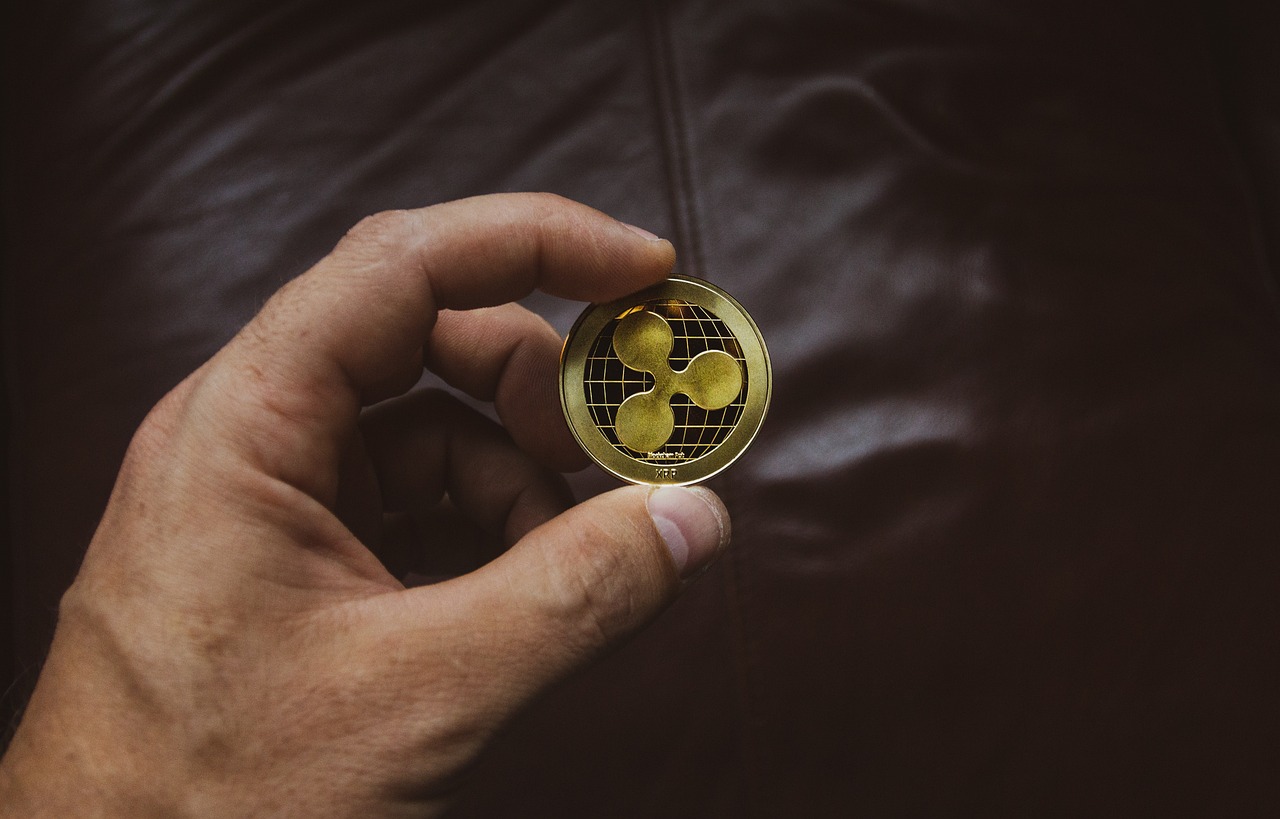
Keeping Track of Transactions
When you're on the move, keeping track of your cryptocurrency transactions can feel like trying to catch smoke with your bare hands. With the fast-paced nature of crypto trading, it’s crucial to have a system in place that ensures you don’t miss a beat. Imagine you're on a beach in Bali, sipping a coconut, but the market is fluctuating wildly. How do you manage your trades without losing track of your assets? This is where effective transaction tracking comes into play.
First and foremost, maintaining accurate records is not just about staying organized; it's about protecting your investments. When trading cryptocurrencies, you need to know exactly what you bought, when you bought it, and at what price. This information is vital for your own records and for tax purposes, as many countries require you to report your gains and losses. So, how do you keep everything straight while globetrotting?
One effective method is to utilize crypto tracking apps. These handy tools allow you to log your transactions in real-time, providing you with a clear overview of your portfolio no matter where you are. Many of these apps sync directly with your wallets and exchanges, making it easier to track your trades without the hassle of manual entry. Here’s a quick look at some popular options:
| App Name | Features | Compatibility |
|---|---|---|
| Blockfolio | Portfolio tracking, price alerts, news feed | iOS, Android |
| Delta | Portfolio analysis, multi-exchange support | iOS, Android, Desktop |
| CoinTracking | Tax reports, profit/loss tracking | Web, iOS, Android |
In addition to using apps, consider keeping a transaction journal. This can be as simple as a spreadsheet or a dedicated notebook where you jot down details of each trade. Include the date, amount, price, and any fees incurred. This not only helps you stay organized but also allows you to reflect on your trading decisions over time. Think of it as your personal trading diary, where you can learn from past mistakes and celebrate your successes.
Another crucial aspect of tracking is understanding transaction fees. Each time you buy or sell cryptocurrency, there are fees involved, which can add up quickly. By keeping a close eye on these costs, you can make more informed decisions about when to trade. For instance, if you notice that certain exchanges have higher fees during peak hours, you might choose to wait for a quieter time to execute your trades. This proactive approach can save you a significant amount of money in the long run.
Lastly, always back up your records. Whether you’re using an app, a spreadsheet, or a journal, ensure that you have a backup in case something goes wrong. Cloud storage services or external hard drives can be lifesavers, ensuring that your data is safe and accessible no matter where your travels take you.
In summary, keeping track of your cryptocurrency transactions while traveling doesn’t have to be a daunting task. By leveraging technology, maintaining detailed records, and being mindful of transaction fees, you can confidently manage your trades and focus on enjoying your travels without financial worries. Remember, in the world of crypto trading, knowledge is power, and being organized is key to your success.
- How can I ensure the security of my crypto transactions while traveling?
Always use secure networks, enable two-factor authentication, and consider using a hardware wallet for added security. - What should I do if I lose access to my trading app?
Most apps have recovery options; ensure you have your recovery phrases or backup codes saved securely. - Are there specific apps recommended for tracking transactions?
Yes, apps like Blockfolio, Delta, and CoinTracking are popular among traders for their comprehensive features.
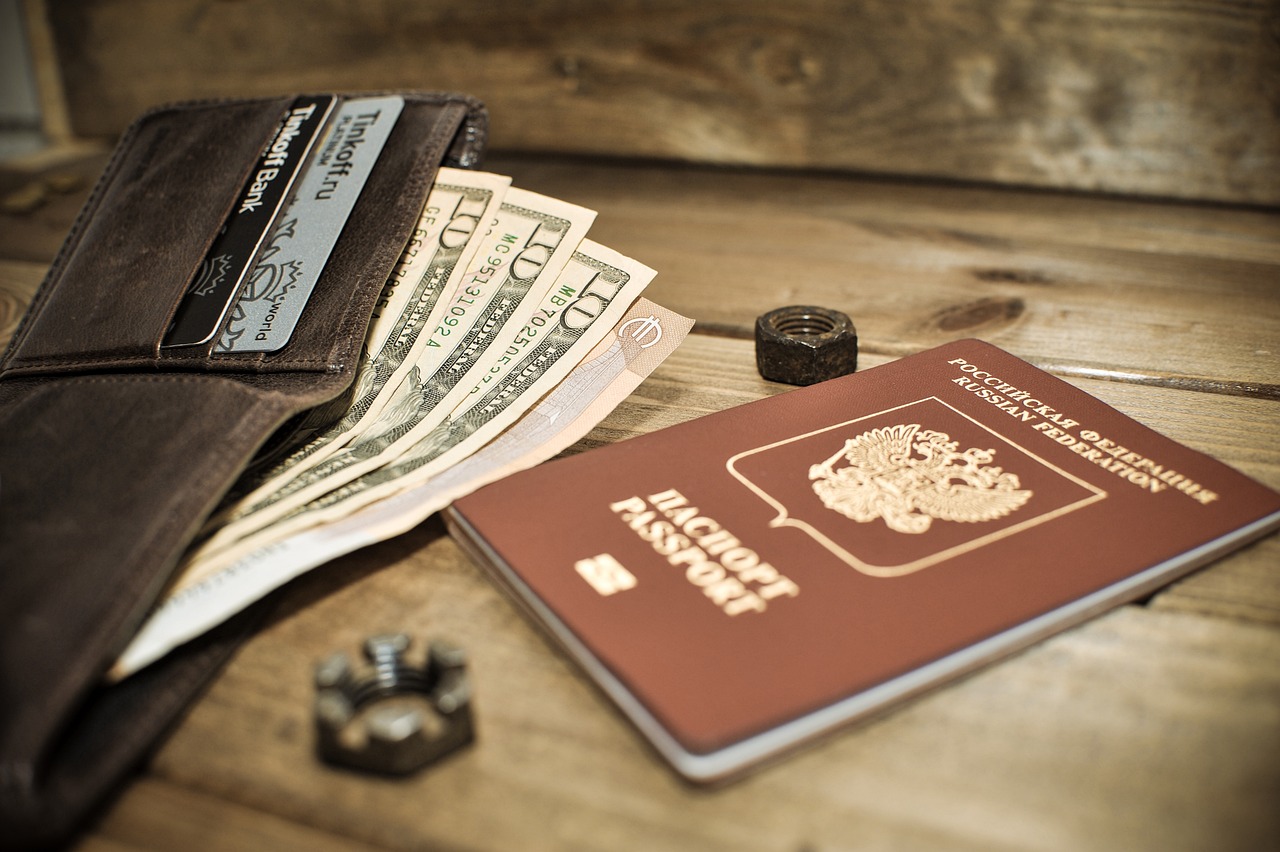
Using Crypto Wallets
When you’re on the go, managing your cryptocurrencies can feel like juggling flaming torches—exciting but risky! That's where crypto wallets come into play. These digital wallets are essential tools for anyone looking to securely store, send, and receive cryptocurrencies while traveling. But not all wallets are created equal. Understanding the different types of wallets and their unique features can make a significant difference in your trading experience.
There are primarily three types of crypto wallets: hardware wallets, software wallets, and paper wallets. Each has its own pros and cons, and your choice should depend on your specific needs while traveling. For instance, if you're planning to make frequent transactions, a software wallet on your mobile device might be the most convenient option. On the other hand, if security is your primary concern, a hardware wallet could be the safest bet.
| Type of Wallet | Pros | Cons |
|---|---|---|
| Hardware Wallet | High security, offline storage | Less convenient for quick transactions |
| Software Wallet | Easy access, user-friendly | Potential for hacking |
| Paper Wallet | Very secure if stored properly | Can be lost or damaged easily |
While traveling, it's crucial to have a wallet that allows you to access your funds quickly and securely. Imagine you're at an airport, and you need to make a quick trade. A software wallet on your mobile device gives you that flexibility. However, you must also be cautious about security. Always ensure that your software wallet has robust security features, such as encryption and backup options, to protect your assets from potential threats.
Moreover, consider the compatibility of your wallet with various cryptocurrencies. Not all wallets support every type of coin, so it's vital to choose one that aligns with your trading strategy. If you often trade multiple cryptocurrencies, opt for a multi-currency wallet that can handle various assets seamlessly.
In addition to choosing the right wallet, it's essential to practice good security hygiene. For instance, regularly update your wallet software, use strong passwords, and set up two-factor authentication (2FA) whenever possible. These practices can significantly reduce the risk of hacks or unauthorized access to your funds.
In conclusion, using crypto wallets effectively while traveling can enhance your trading experience and provide peace of mind. By understanding the different types of wallets and implementing best security practices, you can ensure that your digital assets remain safe and accessible, no matter where your travels take you.
- What is the safest type of crypto wallet? Hardware wallets are generally considered the safest option for storing cryptocurrencies.
- Can I use multiple wallets? Yes, many traders use a combination of wallets for different purposes, such as a hardware wallet for long-term storage and a software wallet for daily transactions.
- How do I recover my wallet if I lose access? Most wallets provide a recovery seed phrase during setup. Keep this phrase secure, as it can help you recover your wallet.
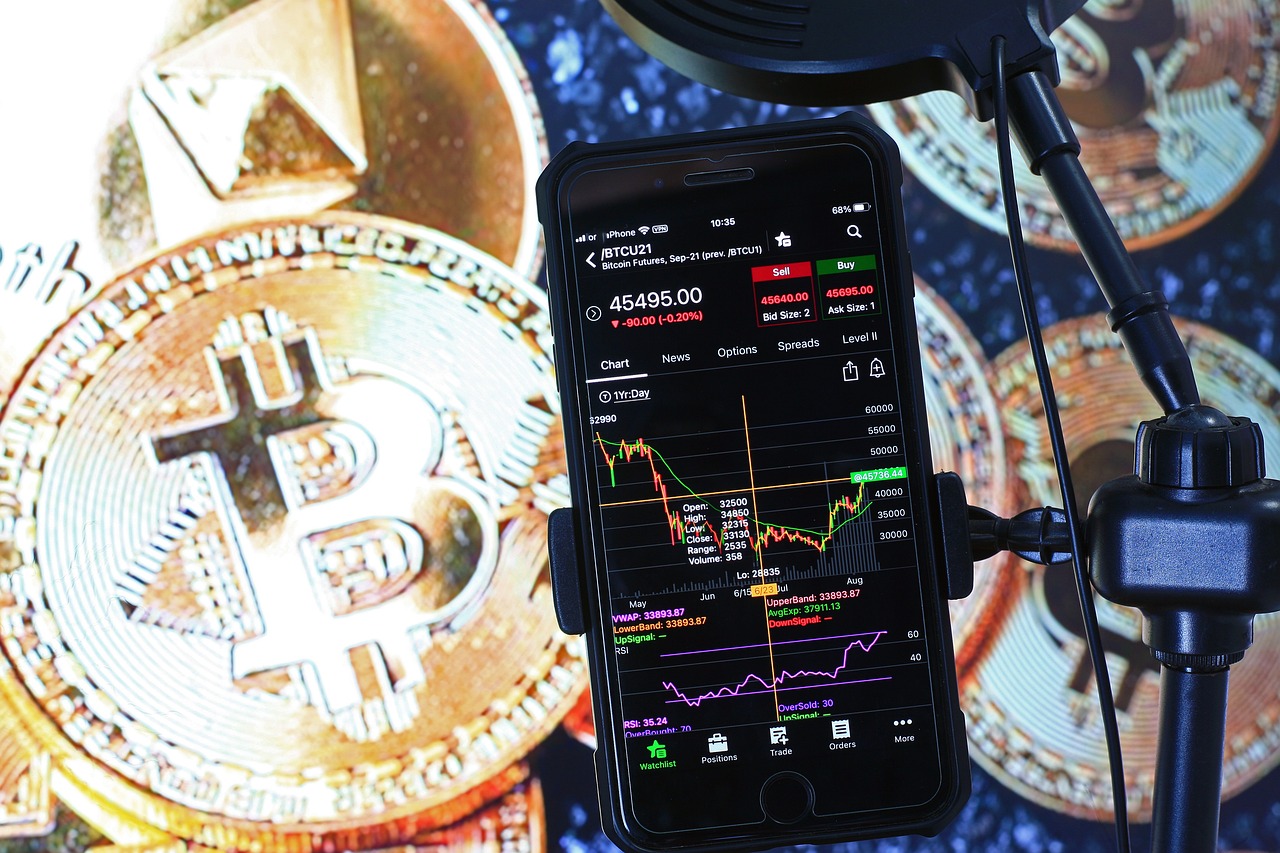
Transaction Fees
When it comes to trading cryptocurrencies, understanding is not just a good idea; it’s essential for maximizing your profits, especially when you’re on the move. Imagine you’re at a bustling airport, juggling your bags and trying to keep an eye on the market. The last thing you want is to be blindsided by hefty fees that eat into your gains. Transaction fees can vary significantly between different exchanges and can impact your overall trading strategy. So, how do you navigate this complex landscape?
First, it’s crucial to know that transaction fees can be categorized into several types, including trading fees, withdrawal fees, and deposit fees. Each of these can vary based on the exchange you choose and the volume of your trades. For instance, some platforms offer lower fees for high-volume traders, while others might charge a flat rate. Here’s a quick breakdown:
| Type of Fee | Description | Typical Range |
|---|---|---|
| Trading Fees | Fees charged for executing trades on the platform. | 0.1% - 0.5% |
| Withdrawal Fees | Fees for transferring funds from the exchange to your wallet. | $1 - $50 (varies by coin) |
| Deposit Fees | Fees for adding funds to your exchange account. | 0% - 3% (depends on payment method) |
As you can see, transaction fees can stack up quickly, especially if you’re trading frequently. It’s like running a marathon with weights strapped to your back; every little bit slows you down. So, how can you minimize these costs while traveling? Here are a few strategies:
- Choose the Right Exchange: Look for exchanges that offer competitive fees. Some platforms even provide fee discounts for using their native tokens.
- Consolidate Trades: Instead of making multiple small trades, consider consolidating them into fewer, larger transactions to save on fees.
- Timing is Key: Monitor market conditions and try to trade during off-peak hours when fees might be lower.
Additionally, always keep an eye on the network fees associated with cryptocurrency transactions. These fees can fluctuate based on network congestion and can significantly impact the total cost of your trades. For example, during peak times, the fees for Bitcoin transactions can soar, making it less economical to trade. It’s like trying to catch a cab during rush hour; the price goes up when demand is high.
In conclusion, being aware of transaction fees and actively managing them is crucial for any trader, especially when traveling. By understanding the different types of fees, choosing the right exchange, and employing smart trading strategies, you can ensure that more of your hard-earned profits stay in your pocket rather than disappearing into the ether of transaction costs. So, the next time you’re on the go, make sure you’ve got a solid plan in place to tackle those pesky fees!
Q: What are the common types of transaction fees?
A: Common types of transaction fees include trading fees, withdrawal fees, and deposit fees, which can vary by exchange.
Q: How can I reduce transaction fees while trading?
A: You can reduce fees by choosing exchanges with lower rates, consolidating trades, and timing your trades during off-peak hours.
Q: Are network fees the same as exchange fees?
A: No, network fees are separate and are charged by the blockchain network for processing transactions, while exchange fees are charged by the trading platform.
Frequently Asked Questions
- How can I effectively trade cryptocurrencies while traveling?
Trading cryptocurrencies on the go can be a breeze if you follow some best practices. First, choose a reliable exchange with a good mobile app. Make sure to stay updated on market trends and use tools like alerts to monitor price changes. Finally, always have a secure internet connection to protect your trades.
- What should I look for in a crypto exchange while traveling?
When selecting a crypto exchange for travel, consider factors like security features, user interface, and fees. Look for exchanges that offer two-factor authentication (2FA) and have a good reputation for security. Additionally, check if the exchange has a mobile-friendly platform or app to facilitate trading on the go.
- How does market volatility affect my trading decisions?
Market volatility can be unpredictable, especially when you're away from your usual trading environment. It's crucial to stay calm and make informed decisions based on real-time data. Setting stop-loss orders can help manage risks, and keeping a close eye on market news can provide insights into potential price movements.
- What are the benefits of using mobile trading apps?
Mobile trading apps offer flexibility and convenience, allowing you to trade anytime, anywhere. They often come with features like real-time charts, alerts, and easy access to your portfolio. This means you can seize opportunities as they arise, even while you're enjoying your travels!
- How can I keep track of my transactions while traveling?
Keeping accurate records is crucial for successful trading. Use crypto wallets that allow you to track your transactions easily. Additionally, consider using spreadsheets or apps designed for tracking crypto trades, which can help you maintain a clear overview of your investments.
- What types of crypto wallets are best for travelers?
For travelers, hot wallets (online wallets) are convenient for quick access to funds, while cold wallets (hardware wallets) offer enhanced security for storing assets long-term. A combination of both can provide a balance between accessibility and security, ensuring you have what you need while safeguarding your investments.
- How can I minimize transaction fees while trading on the road?
To minimize transaction fees, choose exchanges with competitive fee structures. Avoid making small trades frequently, as this can add up in costs. Additionally, consider using limit orders instead of market orders, which can help you control the price at which you buy or sell, potentially saving you money.









